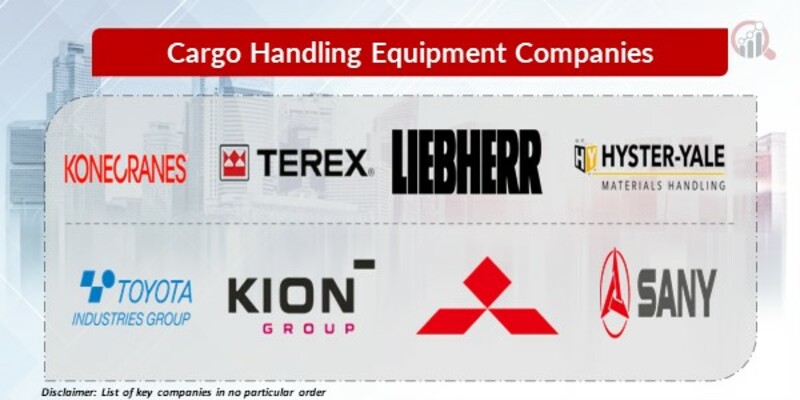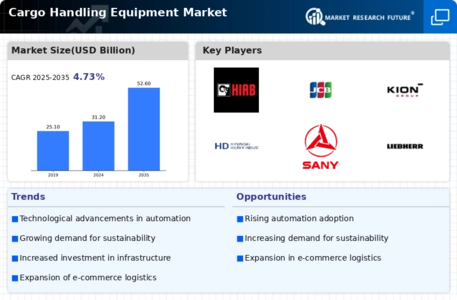Top Industry Leaders in the Cargo Handling Equipment Market
 The cargo handling equipment marketis a dynamic arena where established players battle for dominance alongside agile newcomers. This intricate landscape demands a nuanced understanding of competitive strategies, market share determinants, recent industry news, and emerging trends. Here, we delve into these crucial aspects, offering a comprehensive snapshot of this ever-evolving market.
The cargo handling equipment marketis a dynamic arena where established players battle for dominance alongside agile newcomers. This intricate landscape demands a nuanced understanding of competitive strategies, market share determinants, recent industry news, and emerging trends. Here, we delve into these crucial aspects, offering a comprehensive snapshot of this ever-evolving market.
Strategies for Success: A Tug-of-War for Market Share
Leading players in the cargo handling equipment market employ a diverse range of strategies to secure market share and outmaneuver competitors. Some key tactics include:
-
Product Innovation: Continuously developing cutting-edge equipment, like automated guided vehicles (AGVs) and smart forklifts, to cater to evolving logistical needs and improve efficiency. -
Geographical Expansion: Entering new markets with high growth potential, particularly in developing regions like Southeast Asia and South America. -
Mergers and Acquisitions: Consolidating market share through strategic acquisitions and partnerships, allowing for economies of scale and broader product portfolios. -
Focus on Sustainability: Investing in eco-friendly solutions like electric and hybrid equipment to address environmental concerns and attract environmentally conscious customers. -
Digitalization: Integrating digital technologies like IoT and big data analytics to optimize operations, improve customer service, and offer data-driven insights.
Factors Driving the Helm: Determinants of Market Share
Several critical factors influence market share distribution in the cargo handling equipment market. These include:
-
Product Portfolio: Offering a diverse range of equipment tailored to specific industry needs and cargo types significantly enhances market share. -
Brand Reputation: Established brands with strong brand recognition and a proven track record of quality and reliability often command a larger market share. -
Distribution Network: Having a robust and efficient distribution network ensures wider reach and faster delivery, leading to a competitive advantage. -
Customer Service: Providing exceptional customer service, including after-sales support and maintenance, builds customer loyalty and fosters repeat business. -
Price Competitiveness: Balancing competitive pricing with product quality and value proposition is crucial for attracting and retaining customers.
Competitive Landscape
- Konecranes (Finland)
- Terex Corporation (U.S)
- Liebherr (Switzerland)
- Hyster (U.S)
- Toyota Industries (Japan)
- Kion Group (Germany)
- Mitsubishi (Japan)
- Sany (China)
- JBT Corporation (U.S)
- Anhui Heli (China)
- Kalmar (Finland)
- Macgregor (Finland)
Recent Developments:
The past six months have witnessed several noteworthy developments in the cargo handling equipment market:
-
October 2023: Jungheinrich launches its new AGV series, featuring advanced navigation and safety features for automated intralogistics operations. -
November 2023: The Cargo Equipment Manufacturers Association (CEMA) releases its annual industry report, highlighting key trends and challenges. -
December 2023: Several major players announce investments in research and development of autonomous cargo handling solutions. -
January 2024: The World Trade Organization (WTO) forecasts a slowdown in global trade growth, potentially impacting the market's demand. -
February 2024: Industry experts predict continued growth in the automation segment









